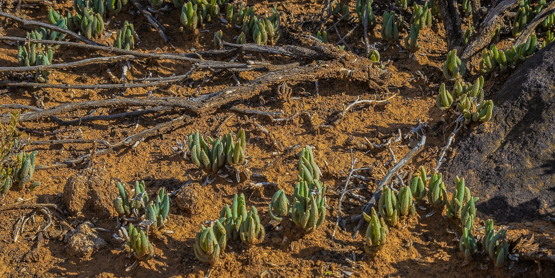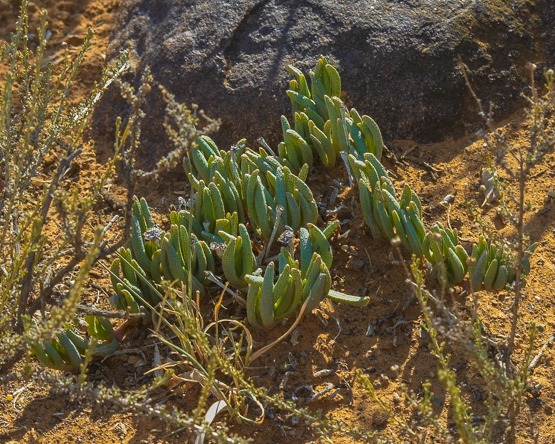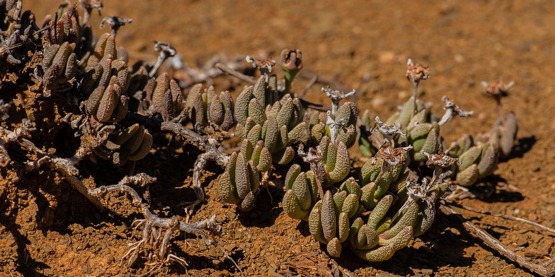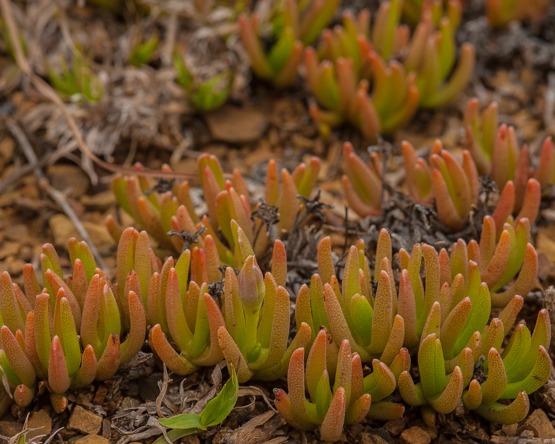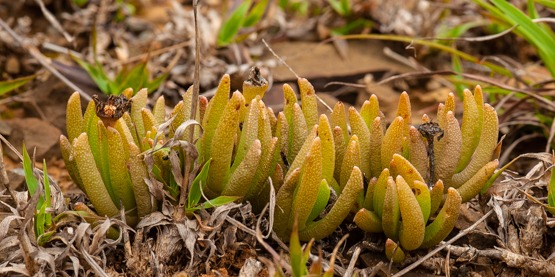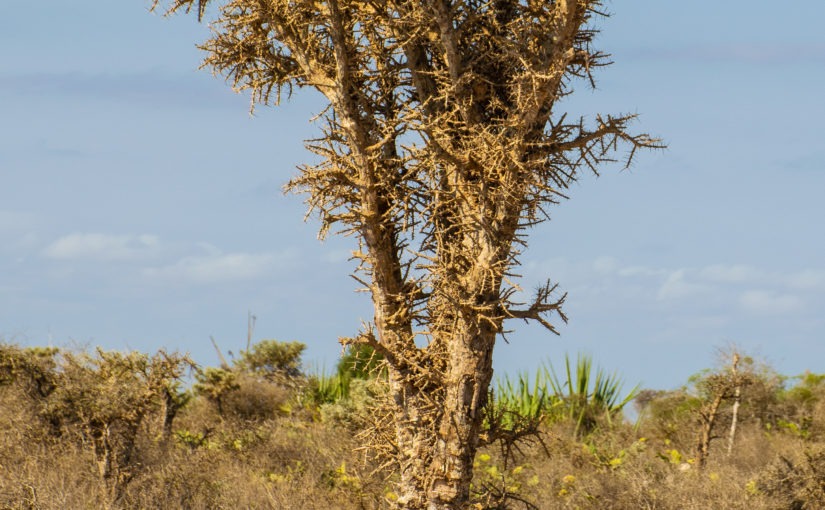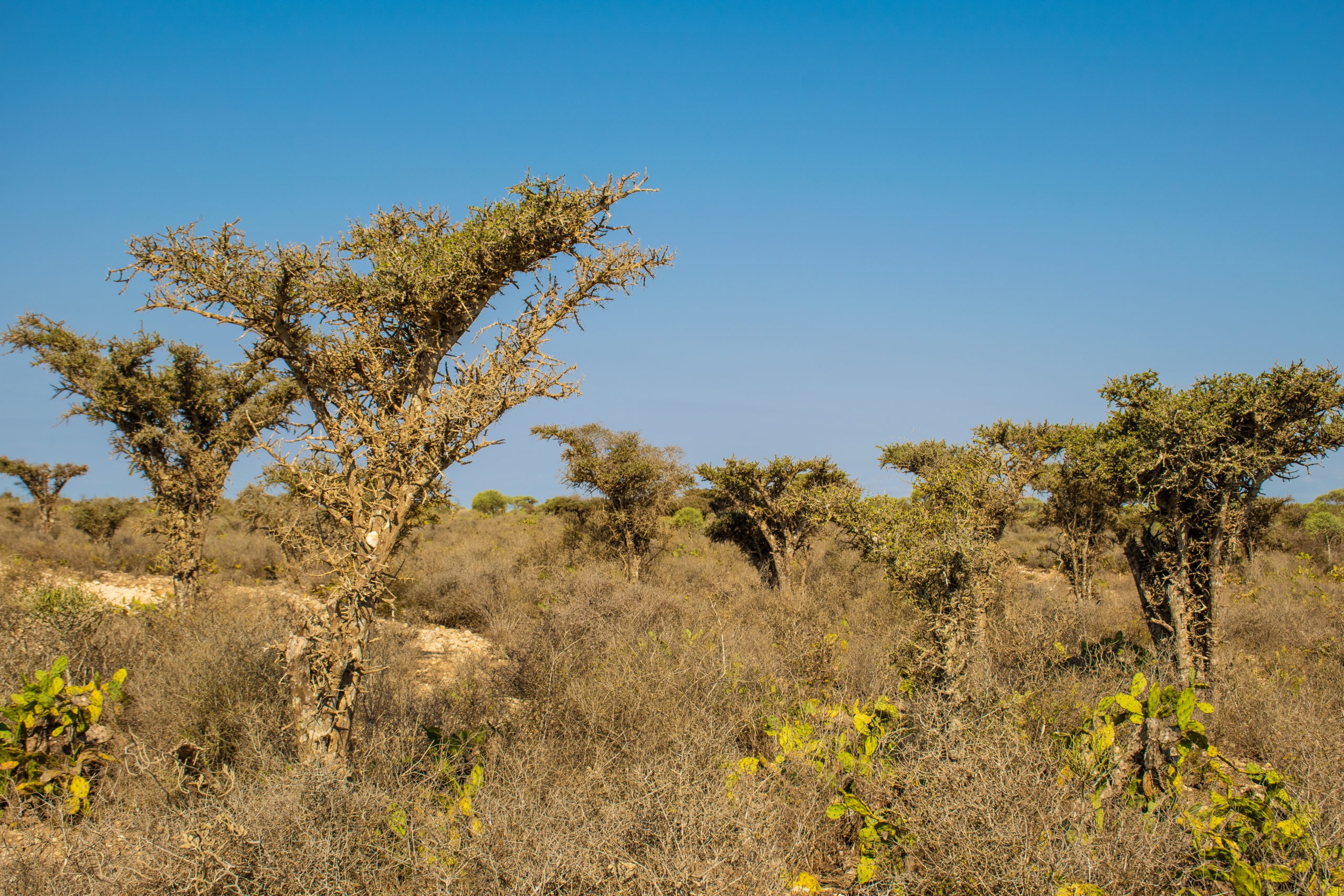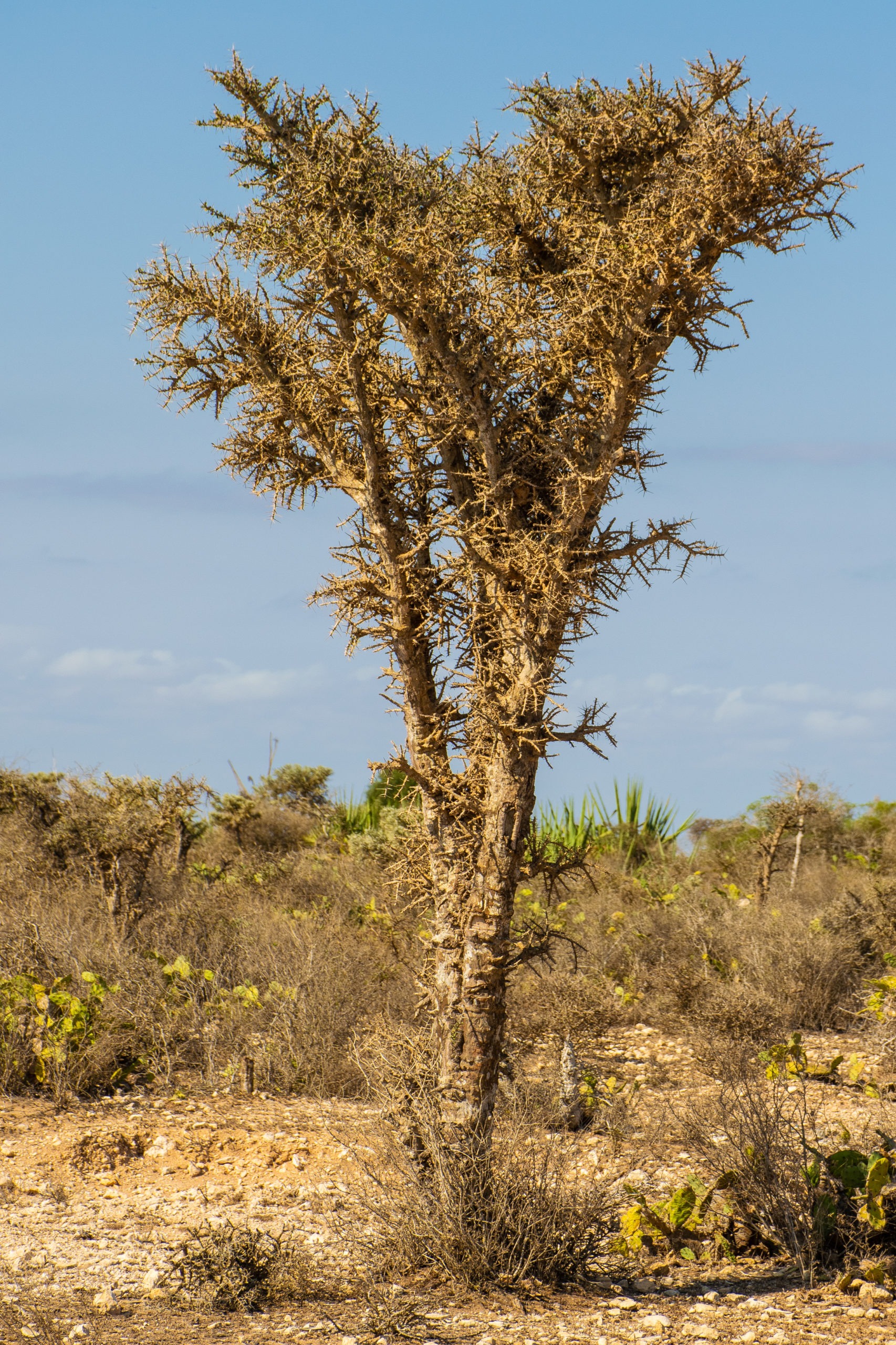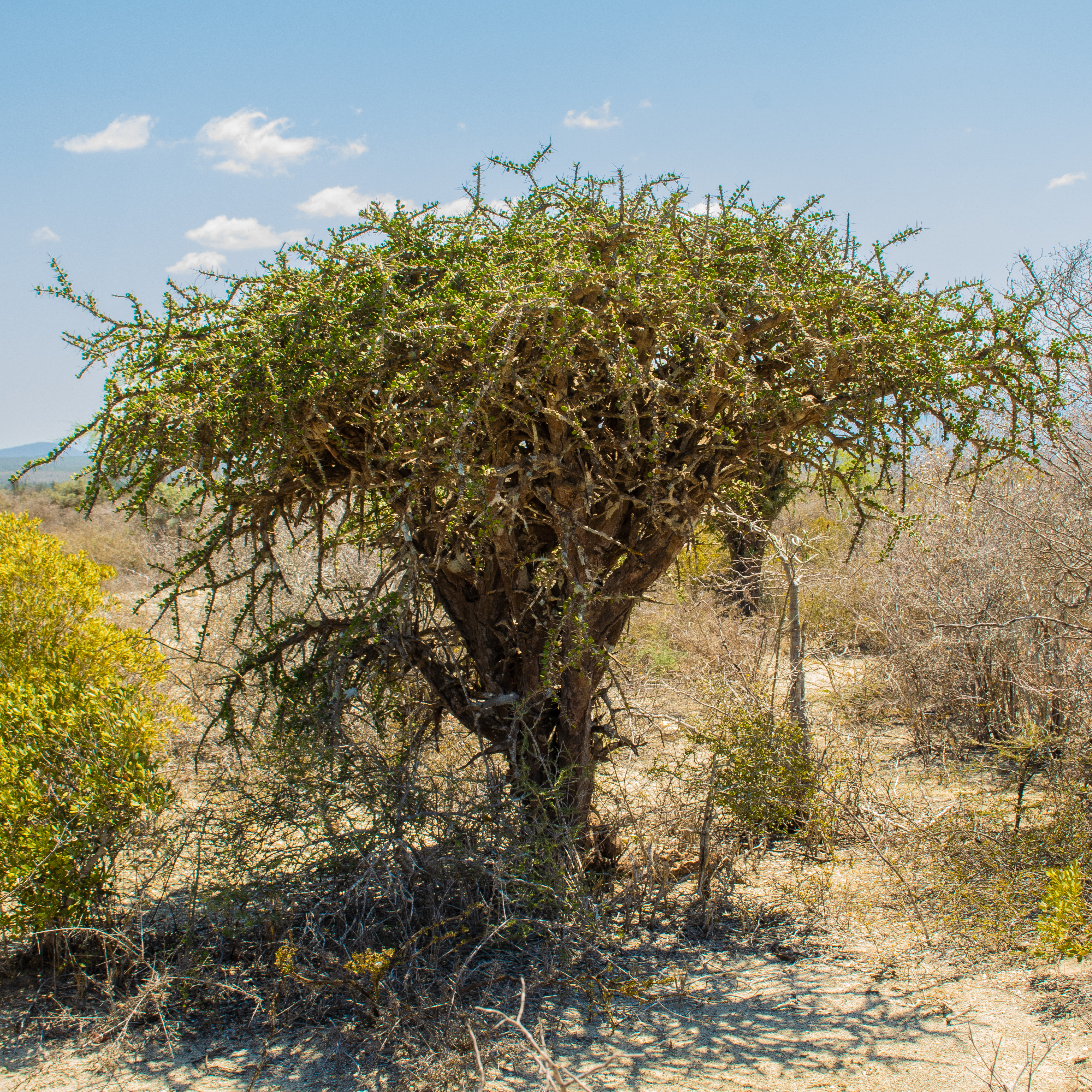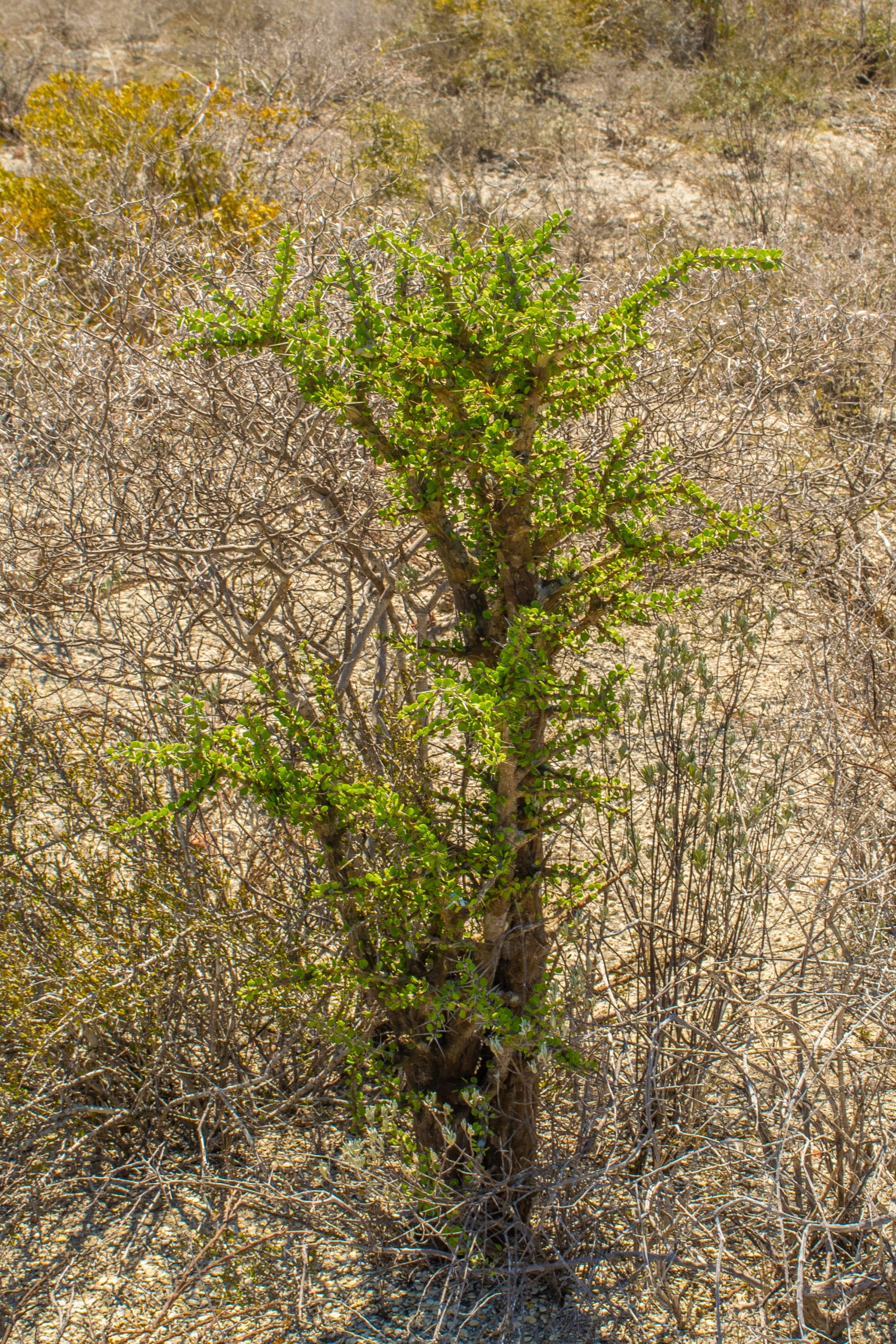This attractive species is widespread in the summer rainfall area of South Africa from the North-eastern Karoo into the Free State and Bushmanland and is also found in southern Namibia. It occurs in flats, in shale or coarser sand or gravel and easily establishes itself along roadsides and in other open spaces.
The plants are rather variable: compact to freely branched with creeping branches, forming dense mats or growing in tufts.
The leaves are more or less trigonous, 1-2.5 cm long, 0.4-0.5 cm wide and thick; they are covered with prominent whitish warts.
Flowers appear from August to December; they have a very short stalk and are about 1.5 cm in diameter. The petals are golden yellow but reddened at the tip on the back surface. They open from late afternoon to early evening.
NB. The picture labelled C. musculinum in Robin Frandsen’s “Succulents of Southern Africa” does not show this species but rather a Stomatium.
